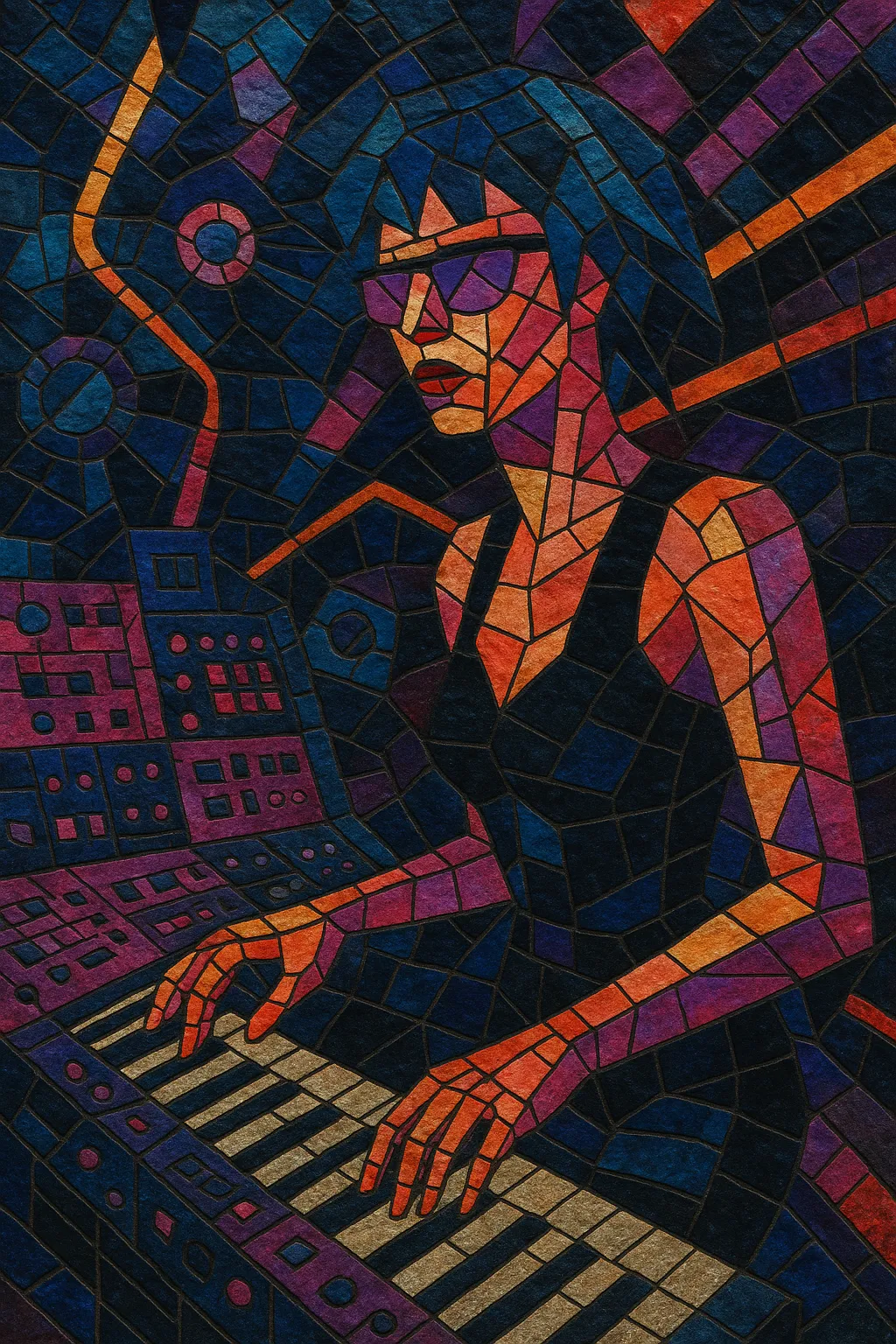
Electroclash is a late-1990s/early-2000s fusion of 1980s synth-pop and new wave aesthetics with contemporary club-ready electro, techno, and house production.
It pairs deadpan or detached vocals, sexually charged and ironic lyrics, and fashion-forward performance art with analog-sounding drum machines, biting synth basslines, and minimal, mechanical grooves.
The style’s signature sound emphasizes retro timbres (saw/square leads, arpeggiators, vocoders), rigid four-on-the-floor or electro-funk rhythms, and a cool, decadent attitude that blurs underground club culture with pop spectacle.
Electroclash emerged in the late 1990s as DJs, producers, and art-scene performers revived the sounds and aesthetics of 1980s synth-pop and new wave, blending them with club-oriented electro, techno, and house. The term is widely associated with New York City promoter/DJ Larry Tee, who helped crystallize the movement’s identity as a fashionable, performance-oriented club culture.
Between 2001 and 2003, the scene exploded through the Electroclash Festival in NYC, dedicated club nights, and prominent European labels such as International Deejay Gigolos (Germany) and Ersatz Audio (Detroit). Artists like Fischerspooner, Peaches, Miss Kittin & The Hacker, ADULT., Felix da Housecat, and Ladytron brought the style to international attention, combining striking visual presentation with minimal, gritty, analog-leaning production.
The genre’s image—glamorous, ironic, and sexually provocative—was as important as its sound. Media coverage amplified its art-fashion-club synergy, positioning electroclash as a cultural moment that bridged underground electronic music and pop.
By the mid-2000s, electroclash’s peak had faded, but its DNA carried into new rave, indietronica, electro house, and broader indie-dance trends. Its retro-synth sensibility and cool detachment also helped normalize the 1980s revivalism that later informed synthwave and contemporary electropop.

